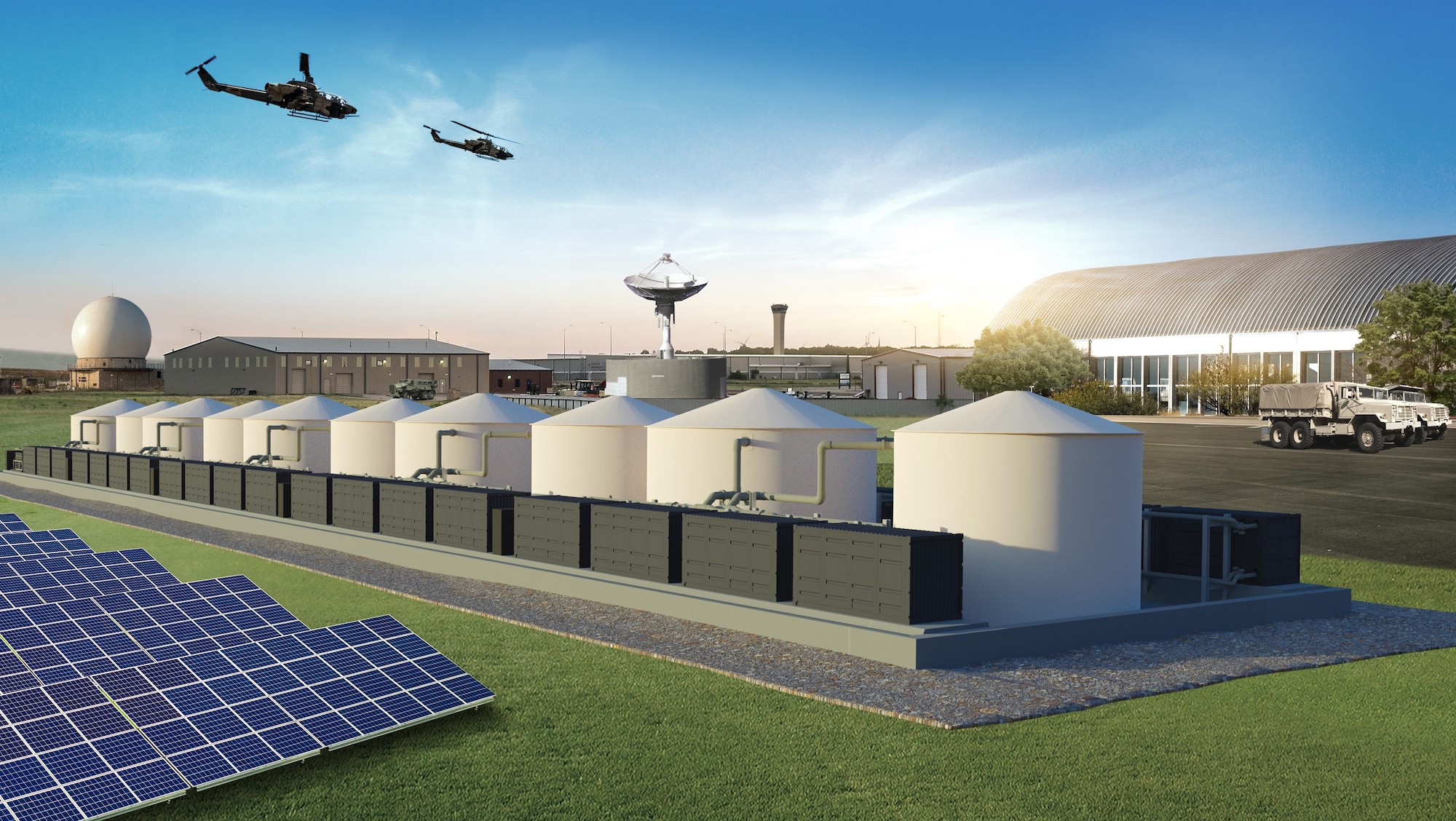

Fort Carson, an Army facility south of Colorado Springs, Colorado, is set to get a very large new battery. The groundbreaking for the new energy-storage system is set for this fall, and the contractor behind it, Lockheed Martin, says it could take some eight or nine months to build it.
The battery will be able to produce a megawatt of electricity for as long as 10 hours, meaning that it is a 10-megawatt-hour device. But this battery is very different from the kind of battery that is in your cell phone, laptop, or electric vehicle. It’s not a lithium-ion battery. It’s a redox flow battery.
In a press release, Lockheed Martin refers to the project as “the first megawatt-scale, long-duration energy storage system for the U.S. Department of Defense (DoD).” Here’s what to know about the Fort Carson project and the energy storage devices called flow batteries.
Why is the DOD interested in energy storage?
“[The] DOD is concerned with ensuring that critical missions, operated from fixed installations, are able to continue operating if the grid goes down for long periods,” Roger Jenkins, the business development director for GridStar Flow at Lockheed Martin Missiles and Fire Control, said during a media briefing earlier this week. That could be due to “a weather event, like we saw in Texas, or some sort of hacking event from unfriendly actors.”
In this case, Fort Carson actually has some battery storage already, thanks to a lithium-ion battery system. It also has a solar panel array on an old landfill that can produce 2 megawatts of juice. “And they have a plan to construct a larger solar array that will come online pretty close to the time this battery comes online,” Jenkins said. The new flow battery system will be in addition to this existing tech.

So what’s a flow battery?
First, it makes sense to consider the lithium-ion batteries that live inside a device like a smartphone or an electric car. Those types of batteries tend to supply power to devices where space is at a premium, so the battery cells must be small.
Lithium-ion batteries have a few basic components. They have an anode, cathode, and a liquid electrolyte inside. Lithium ions travel back and forth in that electrolyte. When the battery is charged, electrons gather at one end of the battery, the anode, and so do the lithium ions. When the battery is powering something, the electrons flow out through the circuit, while the lithium ions shuttle over to the other side, which is the cathode. (Here’s an animation, with the cathode pictured on the left.) A separator in the electrolyte, as its name implies, keeps the two sides separated, although the lithium ions can pass through it. Many lithium-ion batteries are made up of small cells that can be in the shape of cylinders or pouches.
[Related: Why Dyson is going all-in on solid-state batteries]
Meanwhile, a flow battery is really big. In fact, it consists of large tanks of liquid electrolytes. “Unlike many batteries, a redox flow battery is built with flowing electrolytes,” says Levi Thompson, the dean of the College of Engineering at the University of Delaware, as well as a professor of chemical engineering. “Most batteries have stationary, or fixed [electrolytes].” In a lithium-ion battery, the liquid electrolyte isn’t flowing anywhere—it’s just a medium for the lithium ions to flow back and forth.
With a flow battery, “because it’s flowing, and these tanks are going to be huge, you can actually store a lot of energy,” he adds. “For many of these installations, there’s not really a land constraint, or limitation—it’s not like a car battery, where you have a limited amount of real estate.”
That’s why a spacious Army facility in Colorado, for example, can be a good place for a flow battery.
With a Lockheed Martin flow battery, the power is generated in large boxes, or power modules, that each contain four power stacks. The liquid electrolytes (which are stored in the tanks) flow through lots of electrochemical cells in those stacks, past membranes that keeps them separate but allow ions to pass through.
What are the benefits of a flow battery?
With its big tanks and flowing electrolytes and need for large open spaces, a flow battery isn’t going to be powering an electric vehicle or laptop anytime soon, but they have their advantages. “The most important thing, I think, is cost,” says Thompson. “There’s the potential to store energy at a much lower cost than you would with a lithium-ion battery.”
Another perk is that it will theoretically last longer than the competition. “It will cycle more times than a lithium-ion battery,” says Thompson, who also notes that it can be rejuvenated when it needs to be if it starts to degrade.
Ultimately, Thompson says that batteries like this could be a good fit for situations where someone wants to store energy from the grid—perhaps energy made by solar panels, which only produce juice when the sun is shining. “There’s a real opportunity there, if we’re looking for low-cost, cyclable energy storage,” he says. “I think they’re perhaps the most attractive solution, in the long run [for grid storage].”
When the flow battery at Fort Carson is complete, Lockheed Martin says they plan to spend about two years testing it. Watch a video about the system in general, below.

